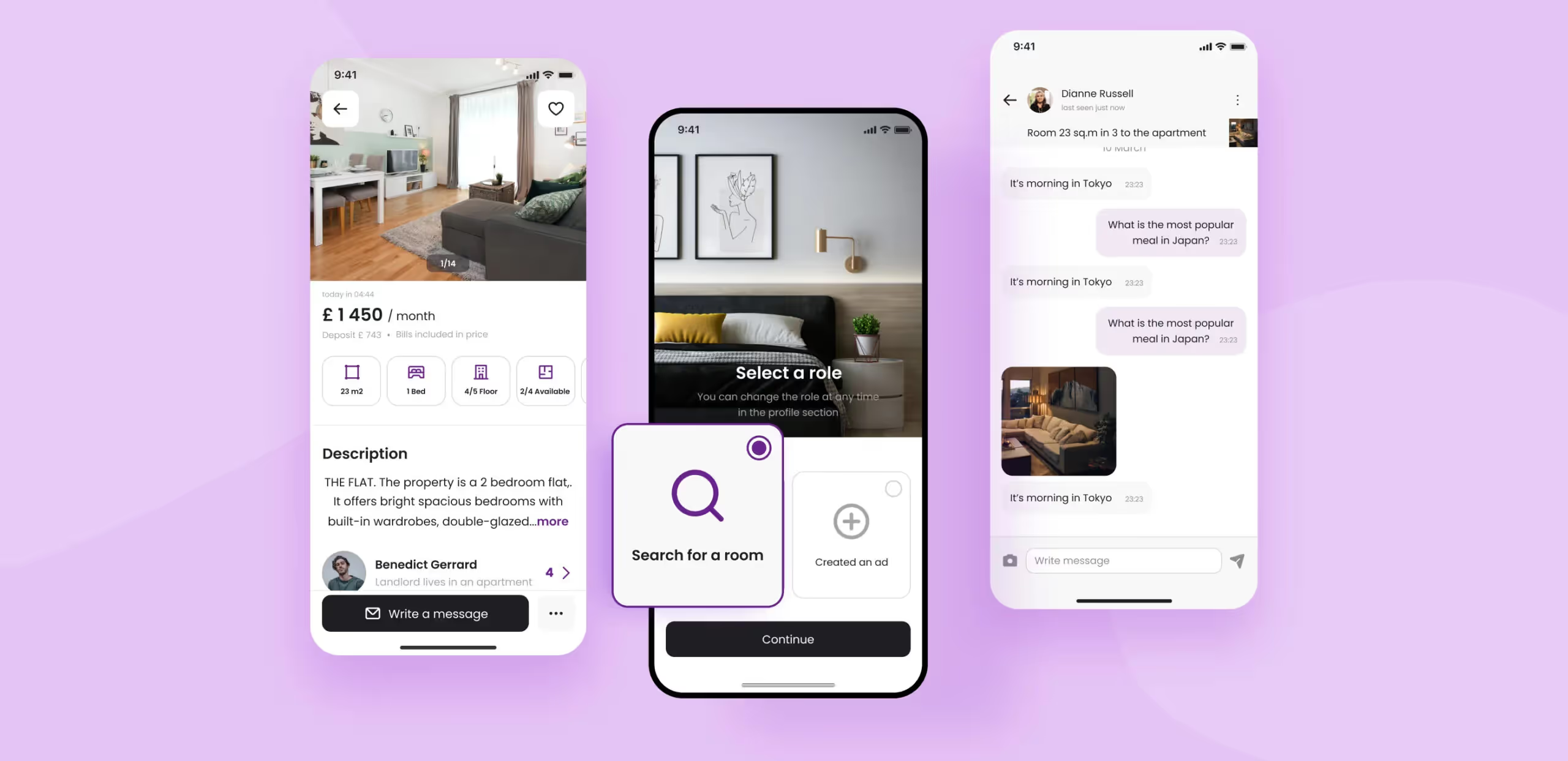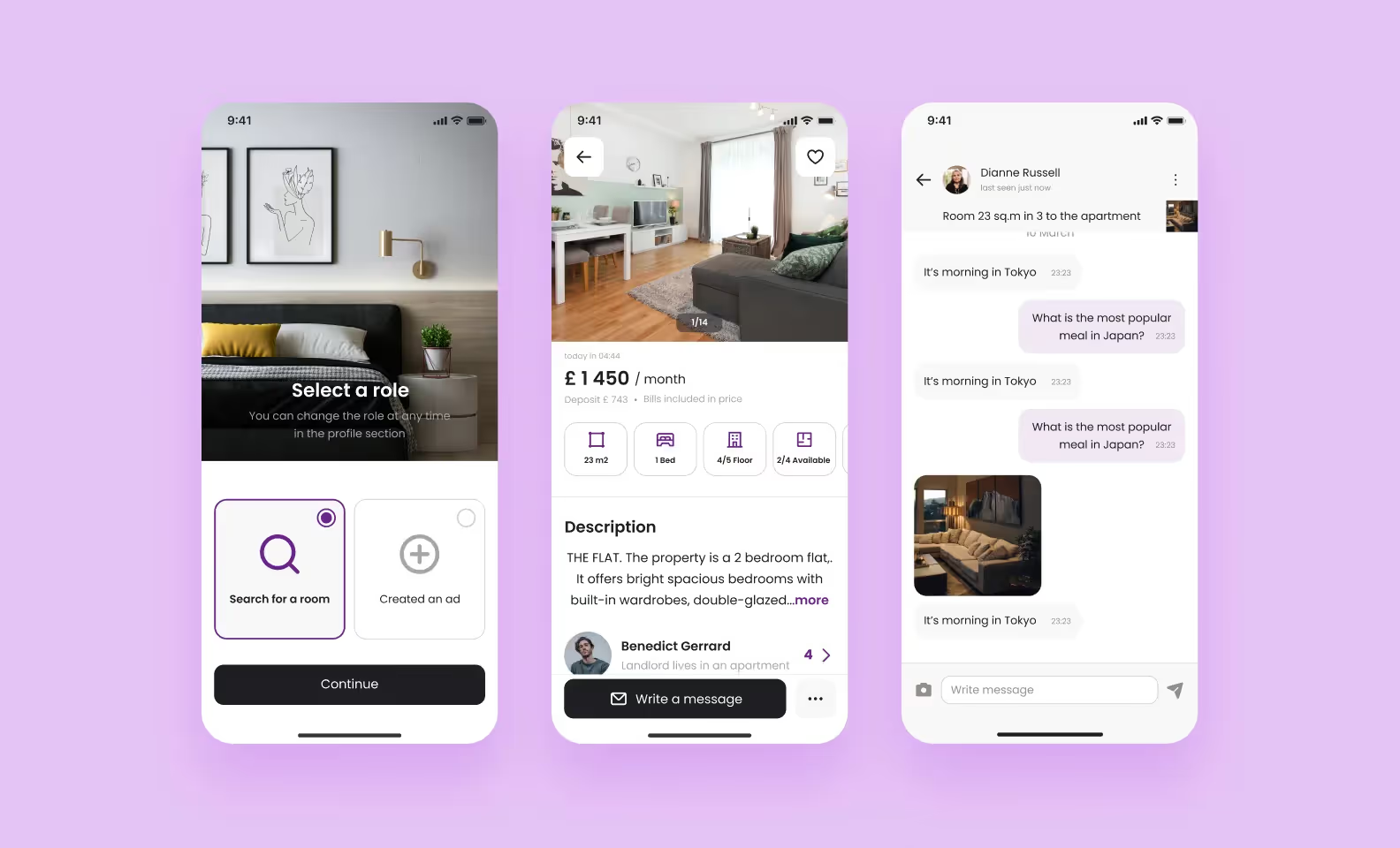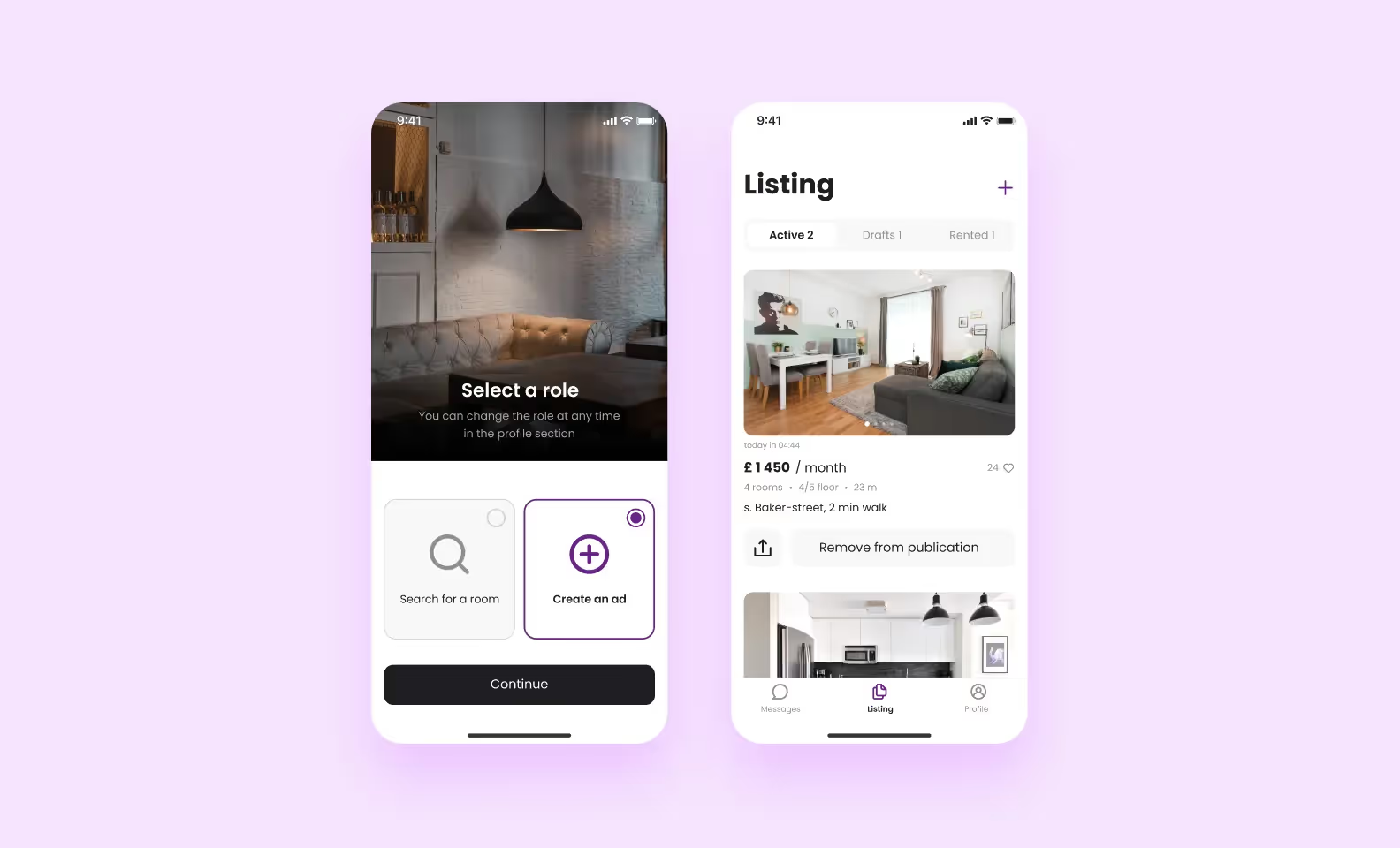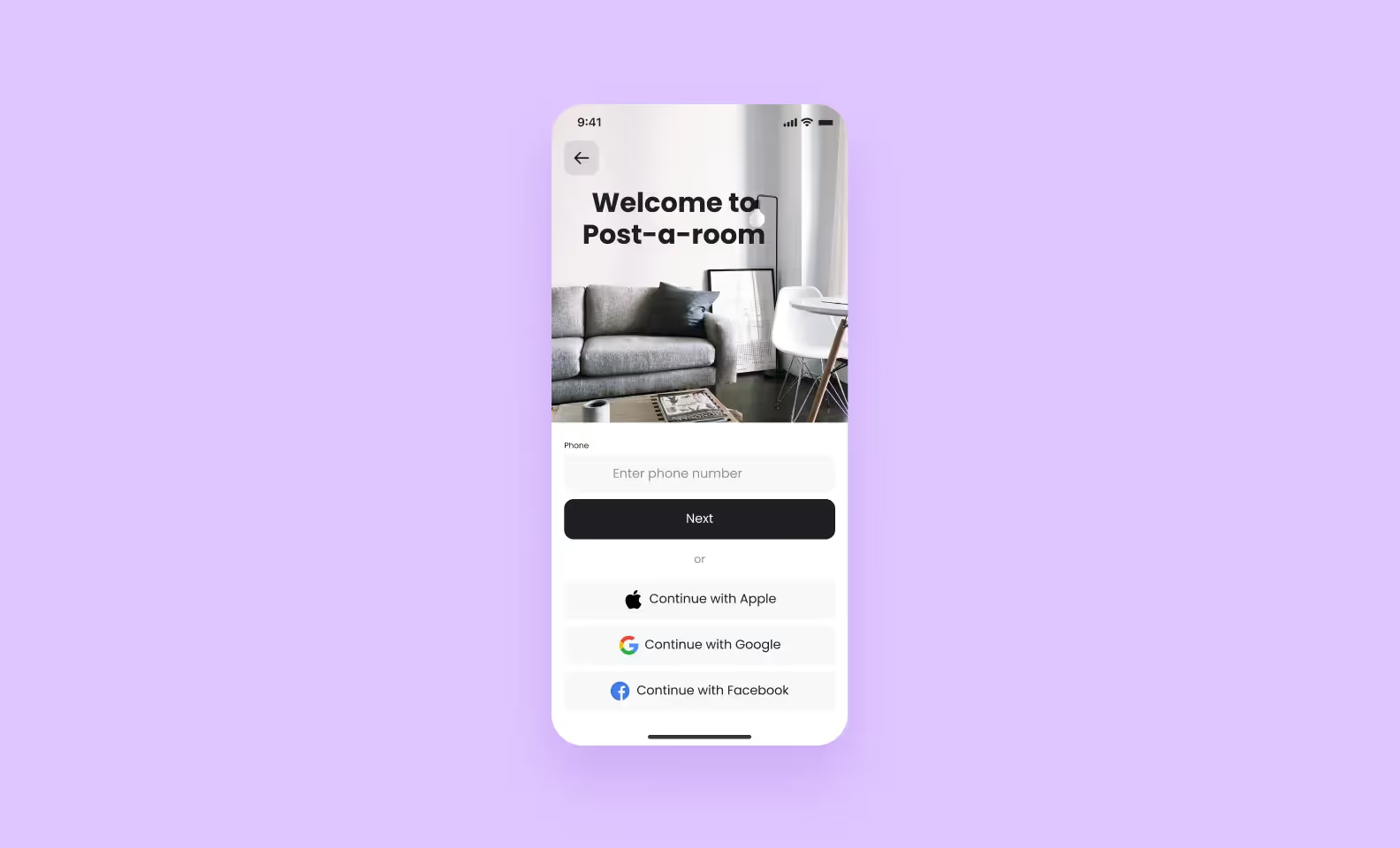


Every startup is a risk. You can have a great idea, money for realization, and brilliant implementation, but something might go wrong. Success of every startup depends on thorough market research, monitoring of key competitors, and high demand for the product. Mobile apps open up unique marketing opportunities for entrepreneurs. I'm Daria Kravets, account manager at Purrweb, and I'll tell you how to use a rental app to find out how Londoners live and what to do with this information.

Our clients are three guys from London, their business is dedicated to startups and helping young entrepreneurs. Negotiations regarding the project began in the fall of 2020, but we started to work only in March 2021. They came to us with an idea — the Post-a-Room project — a mobile app for searching and submitting ads about renting rooms. But their goal was not just to make money or become a major representative in the niche. They wanted to collect information. In the app, tenants can find a room they like and chat with a landlord but the stage of meeting and signing contracts happens offline.
The main goal of the app is to explore the real estate market in London. London is one of the most expensive cities in the world. There are many wealthy people with large apartments. At the same time, there are many students and young professionals in London, who cannot afford renting an entire apartment. Based on the idea of a perfect match between a landlord and a tenant, a startup was born.
Our clients found the real estate market very profitable and wanted to explore it. Are users interested in renting an entire apartment or do they mind getting a single room? What rooms and apartments are in demand, what people’s budget is? How many users will be interested in renting a room in a residential building? If you know the number of people renting apartments and the average budget they spend on renting, you can start a corresponding offline business. For example, a person spends over €2,000 per month on rent. Based on this data, you can hypothesize that their budget allows them to purchase different goods or use services, for example, visit a coffee shop or bakery. Or, you can provide the data about residents in specific areas to interested companies if they want to start their own business or strengthen their points of presence.
If you look at available market research tools, you can think that they were created in the dinosaur age. Polls, focus groups, field research. Interviewing your audience LITERALLY means that you need to select a group of people who are SUPPOSED TO BE your potential users. Plus, there should be a statistically significant sample — the number of interviewed people that reflect the real picture. If there are over 8 million people living in London, you will need to interview at least 8 thousand of them. Yes, these methods are effective, but what about an alternative?
That is why the clients came to us. They decided to develop and launch an app that will help to get information about the real estate market. When the person uses the app, they provide some data. Through this app, they can pull statistics — for example, which apartments are in high demand, which area is preferable and what is the budget of those who came to study in London.
The clients did not choose us blindly, they saw our other project — the real estate app Pad. Last time our task was to redo the existing app and attract investors for further development (by the way, nailed it 😎). You can read more about this in the case study.
The customers knew that we already had expertise in this area, so they wanted to develop a project with us. We got a classical technical requirement for the rental real estate niche — rely on Airbnb. Our idea was to make the theme of the app warm and cozy but in the process, the client rejected the warm orange, so we replaced it with a purple accent.

The app has the same interface for both the landlord and the tenant with the only difference — the bottom navigation bar.


Our designer wanted to make a slider and the clients too. Users can set the price for the desired room or apartment by moving it left and right. You may have seen a similar mechanism in Tinder when users need to specify the minimum and maximum age for a prospective partner. But in a real estate app, this may not work.
Since we had experience with Pad, we knew that making the slider in a rental app would make it less user-friendly. For the users, that means they will not want to use it. Who needs a product that won’t be used? This option wasn’t in our client’s plans, so we had to come up with another solution. As a result, we decided to make our and users’ lives easier and replace slider with the mechanics of entering numbers manually.
Since we focused on Airbnb in design, we focused on them in development too. For authorization in the app, we used AWS Cognito and AWS Amplify, with the second one we easily configured console commands for Cognito — this is how we set up custom authorization in the application.

Initially, we wanted to load all possible rental options at the search stage. If the user is looking for a room in a certain location, the app shows them a certain number of options. But when the user changes the search area, the app loads new rooms. We thought it worked on Airbnb that way but it didn’t, since it would cause a heavy workload on the server.
At first, the client was unable to create an account on AWS. This is a service we usually use to host the backend of the app. We agreed in advance that we would start development on a personal server, and then move to the client’s server but this would require additional time and money.
At the current moment, the project is finished: the features have been developed, and the bugs have been fixed. After the clients give us their logins and passwords, the project will be released in the AppStore and GooglePlay. The Post-a-Room project did not become for us a fight against the unknown, it was another confirmation of our expertise in the real estate niche. Time will tell whether the clients will use it to collect information or evolve the project further.